If you buy through our links, we may earn an affiliate commission. This supports our mission to get more people active and outside.Learn about Outside Online's affiliate link policy
The 9 Best Women’s Snowboards of 2026
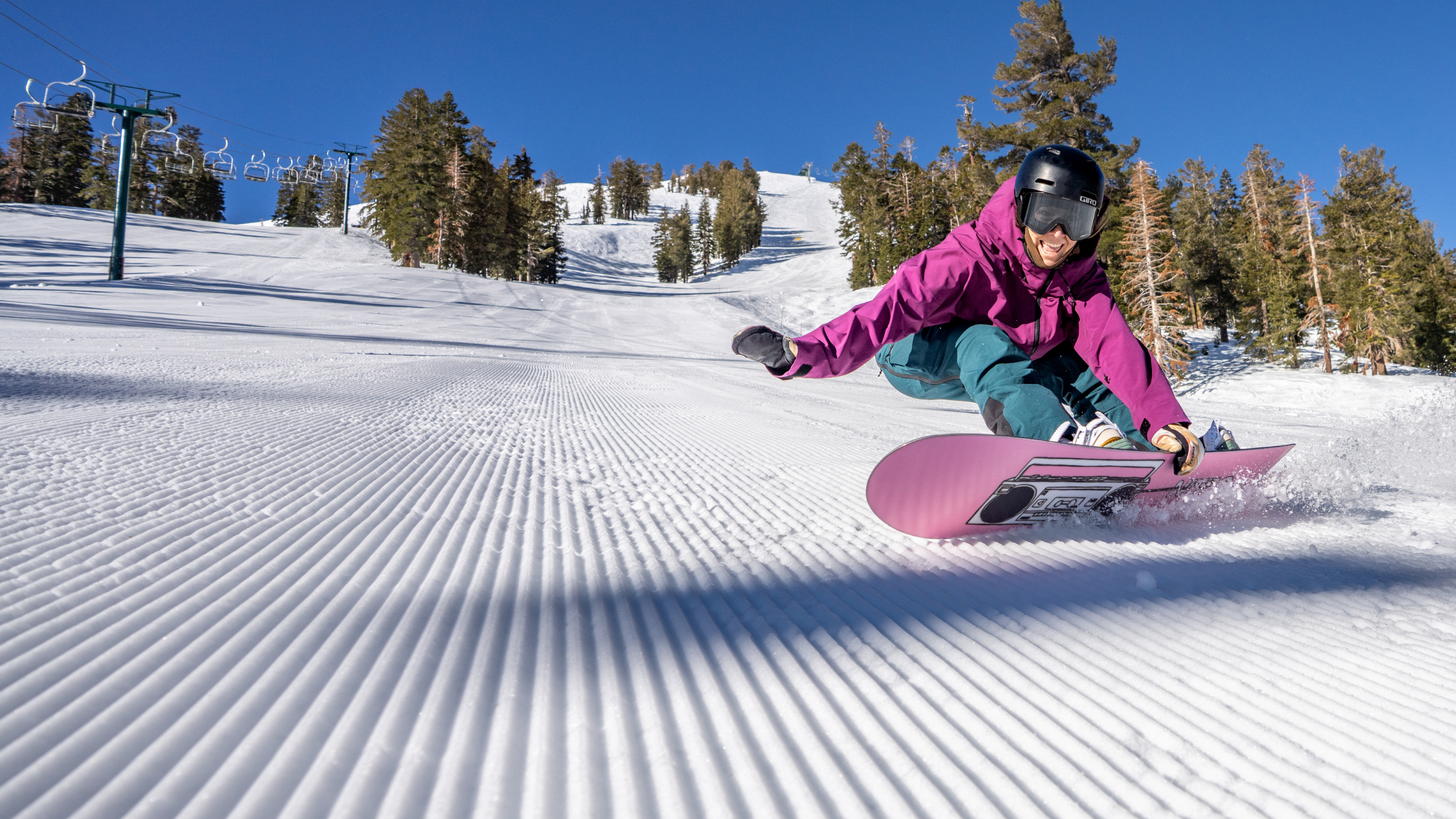
Our female testers put 47 snowboards to the test this spring at Kirkwood Mountain Resort and beyond. (Photo: Katie Botwin)
Table of Contents
Snowboarding is supposed to be fun. When you’re on the wrong snowboard—one that doesn’t jive with your size, skill level, riding style, or the conditions or terrain at hand—fun can devolve into frustration. Luckily for you, our selfless test crew of 13 women sifted through 47 women’s and unisex snowboards at the freeride hub of Kirkwood Mountain Resort and beyond this past spring to bring you the best snowboards for women of 2026.
Even when testers were analyzing snowboards that didn’t wow them or risking high-speed crashes for the sake of data collection, good times were had. As a group, these were the best snowboards we’ve ever had at our annual test, and more often than not, testers loved the boards under their boots. Below, you’ll find the cream of that impressive crop, from versatile all-mountain decks and intermediate-friendly cruisers to buttery jib boards and freeride machines.
Best Snowboards for Women: At a Glance
Editors’ Choice: Jones Women’s Howler ($700)
Best Value/Best Park: Nidecker Cheat Code ($430)
Best All-Mountain: Weston Dream Machine ($599)
Best Freeride: Salomon Fast Lane ($750)
Best Powder: Capita Navigator WMNS ($650)
Best for Advanced Riders: Gnu Barrett ($600)
Best for Beginners And Intermediates: Jones Rally Cat ($480)
Best Backcountry-Freestyle: K2 Antidote ($700)
Best for Camber Purists: Nitro Alternator X Hailey ($580)
The Reviews: The Best Women’s Snowboards of 2026
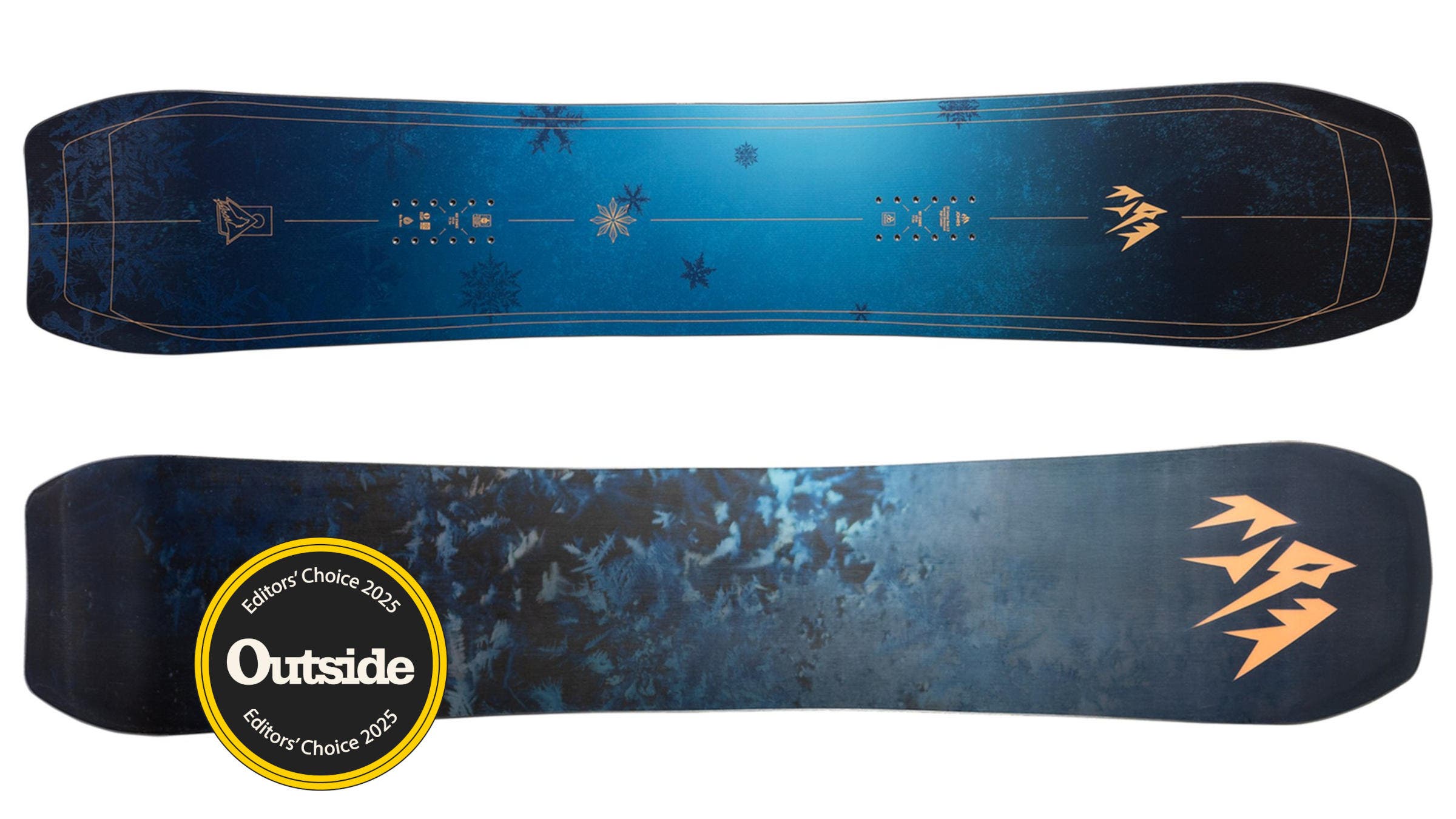
Editors’ Choice
Jones Women’s Howler
Sizes: 145, 148, 151
Genre: All-mountain/Freeride
Profile: High full camber
Pros and Cons
+ Jack of all trades and a master of them, too
+ Trustworthy in gnarly, technical terrain
+ Rockered nose is buoyant in powder and blasts through crud
𑂾 Too much juice for mellower intermediates
𑂾 Doesn’t ride switch as well as twinnier shapes
To quote illustrious poet Miley Cyrus, the new Jones Howler came into our annual snowboard test like a wrecking ball. The versatile directional shape broke our test record for the most perfect scores a board has ever received. Now that we mention it, the cambered, mid-stiff Howler rides a bit like a wrecking ball, too, whether it’s plowing through chop and chunder or pillows and powder.
Designed with feedback from Jones pros and backcountry phenoms Elena Hight and Victor De Le Rue, the minimally tapered, setback Howler sports a floaty yet ferocious rockered nose and a stout, moon-shaped tail, with powerful camber underfoot. The nose features a Koroyd insert in the center—a collection of hollow, cylindrical straws set into the shovel of the nose, also seen on the Jones Aviator 2.0—that shaves weight without sacrificing dampening. The resulting ride is buoyant enough for blower backcountry days and reliable enough for the gnarliest freeride spice.
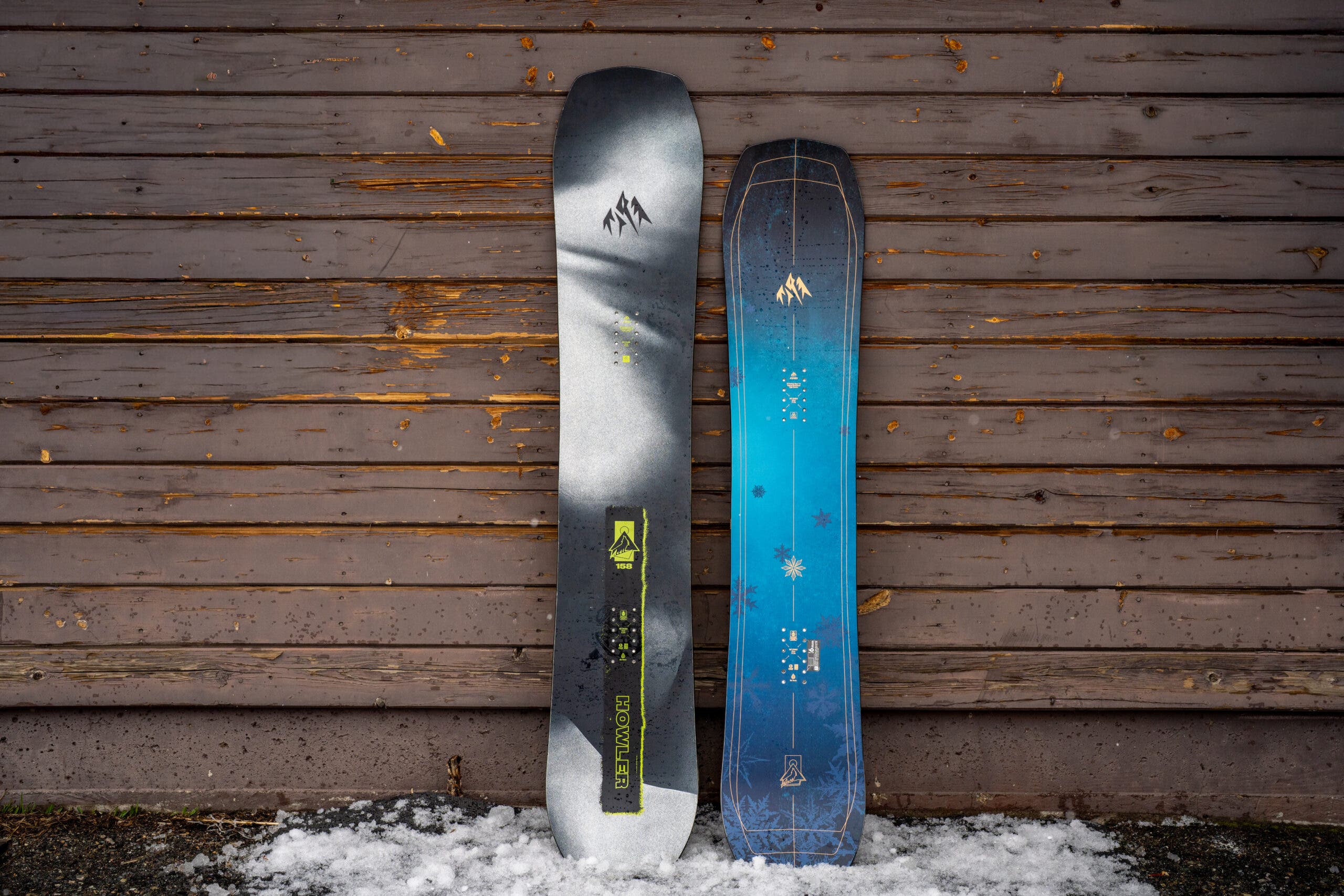
“It excels in everything. Crud, ice, slush, pow,” said a smitten avalanche forecaster who tested the Howler both at Kirkwood and all spring long in the Sierra. After confidently hop-turning down icy chutes, stomping spring cornice drops, and bopping through the park, she was struck by the Howler’s versatility. “Riding this thing, I feel like a mountain goat who can get through any tight, steep tech, yet still blast through a boardercross course or a double-overhead wiggle with confidence and speed.” A Tahoe freeride competitor agreed, but noted she felt off her game riding switch in steep terrain—a somewhat expected piece of feedback given the setback freeride design. However, a couple testers found it stomped switch landings well for a tapered charger.
Thanks to traditional camber underfoot, a long effective edge, a subtly serrated sidecut, and a stiff tail powered by a bamboo-bolstered paulownia core, the Howler is a carver that holds a rail like it’s in barre class. “Snappy-ass turns! Like ‘hold on, honey!’ You think it, she’s heading there,” penned a hard-charging Tahoe freerider. Testers gave additional kudos to the three-dimensional spooning in the nose and tail, which helps foster effortless edge-to-edge transitions. That tail has plenty of power for hucking and hangtime, too.
For the most part, ladies loved the Howler, but several riders shared a concern. Given the dependable mid-stiff flex pattern, the longer effective edge, and an above-average waistline, a few testers felt the Howler rode longer than its length. “The 151 rode like a 155 for me,” wrote one. Though she still gave the deck a perfect score, she would’ve liked to try a smaller size.
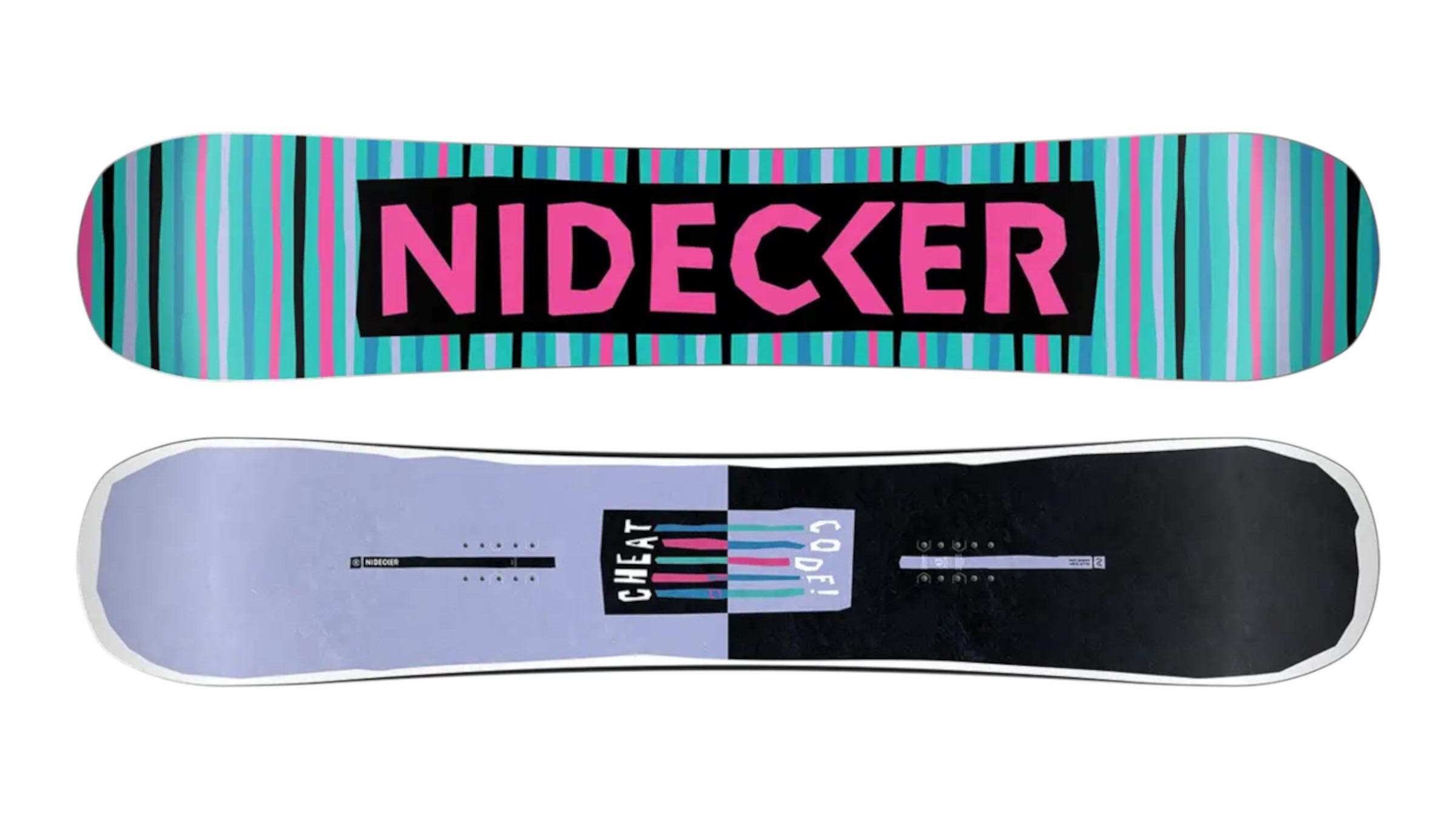
Best Value/Park Snowboard
Nidecker Cheat Code
Sizes: 125, 130, 135, 139, 142, 146, 149, 153, 156, 156w, 159, 159w, 162w
Genre: Park/All-mountain freestyle
Profile: Camber underfoot, rockered nose and tail
Pros and Cons
+ Affordable
+ Playful and pressable jib board
+ Soft and easy to ride for beginners and intermediates
𑂾Better at playful jibs than bigger jumps
𑂾Heavier or harder-charging testers reserved it for park daysr
Nearly $200 less than the rest of the decks in this guide, the unisex Cheat Code follows a classic park board recipe, with a true twin shape, springy camber underfoot, and an easily pressable and soft flex pattern courtesy of a poplar core laminated with biaxial fiberglass. “It pops like popcorn,” said an all-mountain freestyler who judged it easy to ollie and reliable when landing.
A Tahoe snowboard coach gave the Cheat Code high praise, suggesting that if you want to feel like Scott Stevens—the baron of butters, arguably the most creative snowboarder of all time, and a magician who’s invented more tricks than David Copperfield—the Cheat Code is one of the best snowboards on the market. “It shines on rails and butters. It encouraged me to get silly in the park—to slow down, flex the board, and just have fun.”

Testers were stoked to see the Cheat Code comes in a slew of men’s, women’s, and youth sizes, making it the most inclusively sized deck we tested this year. Men who tested the larger size (159) were happy to reserve the Cheat Code for park laps and jib sessions. “It’s too flimsy to hit big cliffs, and soft when you really lay into a turn—but that’s part of what makes it so fun in the park,” acknowledged a Wasatch-based tester.
However, several women who rode the smaller size at the test (146) reported that the Cheat Code was more fun than anticipated outside of the park. “Quick turns, super maneuverable, wiggles like a champ,” commented one all-mountain rider after taking the Cheat Code through the Finger Chutes, some of Kirkwood’s iconic in-bounds freeride terrain.

Best All-Mountain Snowboard
Weston Dream Machine
Sizes: 143, 146, 149, 152, 155, 158, 158w, 161w, 164w
Genre: All-mountain
Profile: Camber underfoot, rockered nose and tail
Pros and Cons
+ Versatile
+ Durable
+ Solid freestyle and freeride abilities
𑂾Not forgiving enough for mellower all-mountain riders
𑂾Outperformed by specialized shapes in certain conditions (park, powder, etc.)
A stable, trustworthy, and fun do-it-all snowboard that inspires confidence and encourages progression, Weston’s new unisex Dream Machine was a smash hit at this year’s test. The directional twin features grippy, poppy camber underfoot and a buoyant rockered nose and tail, as well as a mid-stiff poplar, paulownia, and bamboo core wrapped in triaxial fiberglass. Two pairs of parallel carbon stringers running from the inserts to the nose and tail add stability and spring-loaded energy. One tester said this snowboard handled anything she jumped on. “Solid in firm snow and manky chop, and smooth sailing in better conditions,” she affirmed.
A longtime Kirkwood snowboard instructor and freeride competitor dug the board’s carving ability, as well as the multi-radius sidecut’s ability to lock in when it counts. “It held an edge on icy steeps and ripped in bumps.” Last but not least, she appreciated the setback stance combined with the lack of taper, a directional twin design that allows the deck to float in powder and still ride switch and throw tricks like a champ. “Ten out of ten, would be my daily driver,” she said.
Who isn’t the Dream Machine for? A less aggressive all-mountain rider found the Dream Machine required more input than her riding style warrants. “I had to really work it to ollie,” she explained.
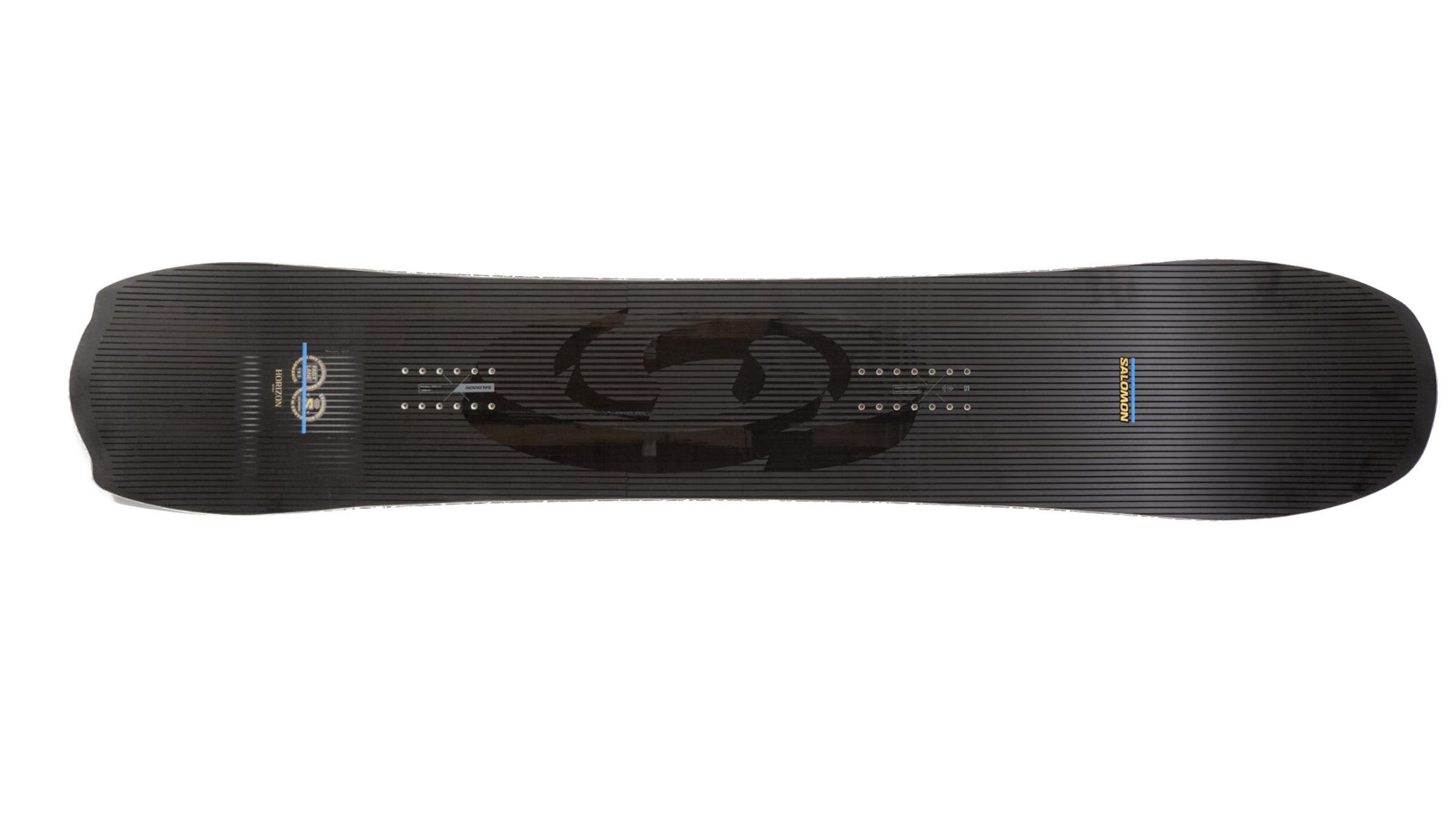
Best Freeride Snowboard
Salomon Fastlane
Sizes: 149, 153, 157, 160, 163, 166, 170
Genre: Freeride
Profile: Backseat camber
Pros and Cons
+ Powerful
+ Buoyant in powder
+ Carving machine
𑂾Prefers high speeds over casual cruising
𑂾Too stiff for mellower riders
If you’re a hard-charging rider seeking float and freeride stability, flash your turn signal and speed into the Fastlane. This flat-nosed, backseat-cambered deck is stiff and sendy thanks to a stout aspen core reinforced with a wide strip of dampening flax and responsive carbon fiber from nose to tail. A dampening cork insert in the nose helps the deck charge through chop. A Sierra freerider who tested the Fastlane all spring reported, “I was able to rip down a chute, drop off a 15-footer, and Cadillac through the chunder and tracks below.” She continued: “It rips everything! Powder, groomers, steeps, chunder, cliffs, slush. Riding it is like eating a can of Pringles. I can’t stop once I start.” She loved the stiff tail for those cliff drops and landings, as well as the versatile quadratic sidecut, noting the Fastlane could handle a variety of turns, from tight tree wiggles to bigger arcs on groomers.
Testers agreed the Salomon performs best at higher speeds. “If the left lane of the autobahn happened to have jumps in it, the Fastlane would be right at home,” commented a male Colorado tester who tested a larger size all spring long. “The snappy core offers plenty of pop, but at speed it can be loaded up exponentially more than on flat.” He dug the stiff tail’s stomping prowess and the elongated nose, too, claiming it “auto-floats” in deep snow.
That said, the Fastlane was too much to handle for less aggressive testers. A laidback rider reported, “This board is way too stiff for me, and better suits stronger riders who want to go fast and straight on the steeps.” Beginners, she said, should steer clear.
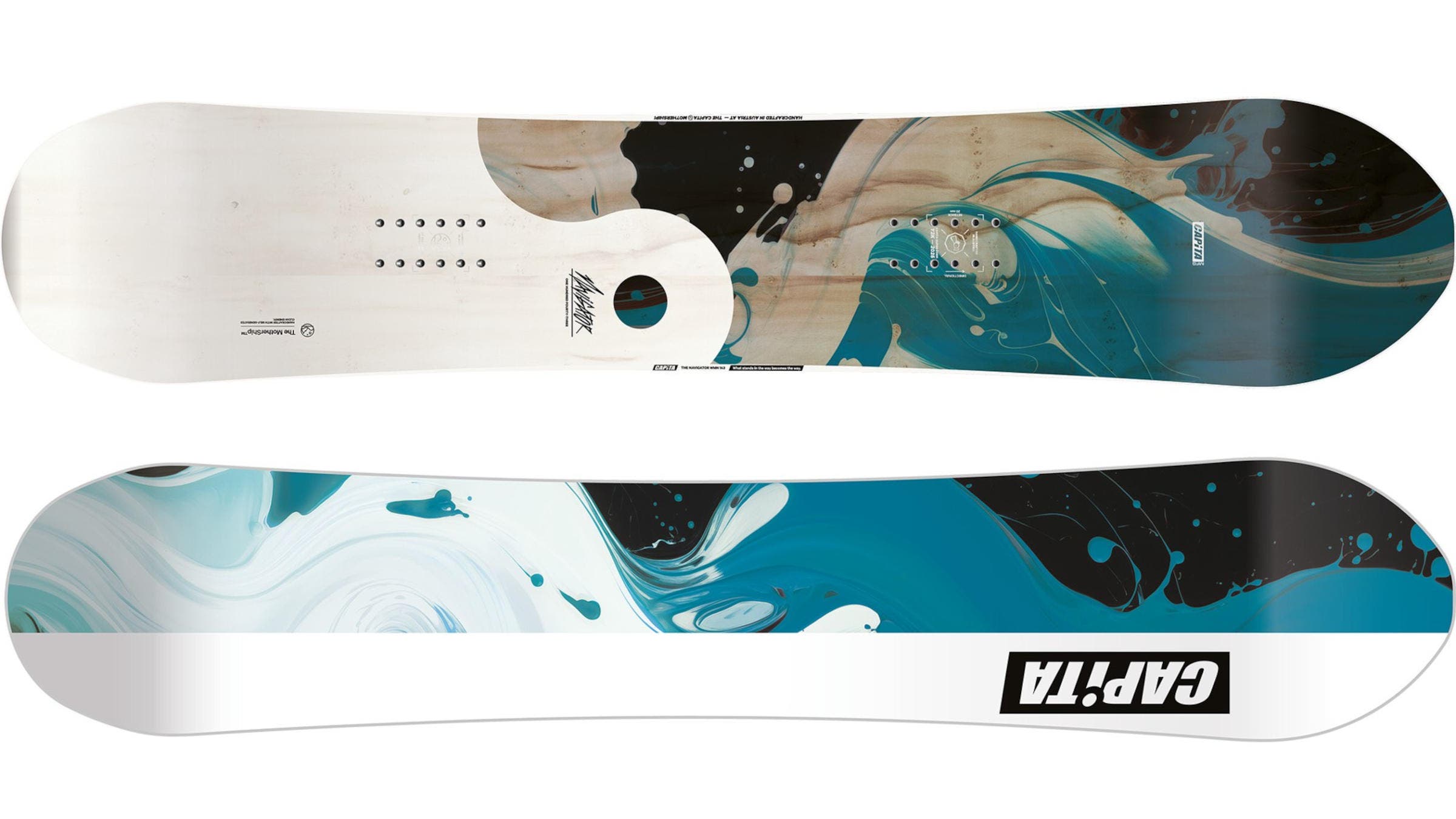
Best Powder Snowboard
Capita Navigator WMNS
Sizes: 143, 147, 151 cm
Genre: Powder/All-mountain resort
Profile: Hybrid camber
Pros and Cons
+ Lightweight
+ Workable flex
+ Floaty nose
+ Agile turning
𑂾Bucked by variable conditions
Capita’s Navigator WMNS has flex appeal. The featherlight, lightly tapered directional powder craft sports a medium-soft poplar and paulownia core, bolstered by two parallel strips of shock-absorbing, ollie-enhancing interwoven flax and aramid fibers. The resulting ride? “Super fun! Light and easy to get off the ground. It’s soft and buttery—not soft and floppy,” said a Tahoe ripper.
An aggressive Tahoe freerider and test veteran agreed, calling the Navigator a “flexy stick with personality that navigates the whole mountain with style and ease.” She appreciated the pop powered by the dual-wood core and the flax-and-aramid strips, describing the Navigator as a “launcher with plenty of spring.” However, she did voice a critique common with lighter, softer boards: while the Navigator handles pow and fresh corduroy like a dream, she found it was bucked by frozen ruts, high-speed hardpack, and choppy snow.
A lighter-on-her-feet, less aggressive, and more freestyle-oriented rider felt otherwise. “This board would be my weapon of choice on a powder day, even if you live in a resort town like Mammoth, where everything gets completely tracked out about 45 seconds after the chair opens—because not only does it float through powder, but it also manages chatter well and allows you to power through any choppy technical terrain,” she explained.
There was no debate, however, whether the Navigator was agile. The directional deck sports traditional camber underfoot for edge hold and pop, which transitions to floaty, catch-free rocker just outside the inserts before kicking up into the steeper nose and tail. Combined with a parabolic sidecut that’s tighter at the waist and longer toward the nose and tail, the Navigator’s contact points are naturally raised off the snow. Snowboard nerd talk aside, this combination provides fun float in powder and the maneuverability necessary to confidently glide through glades. “Nimble turner,” voiced a Tahoe snowboard instructor.
A South Lake Tahoe rider tested the Navigator during a few classic spring powder days that let the lightweight build and wide, rockered nose shine. “While it’s a great all-mountain directional board for intermediate to expert riders, it stands out in powder conditions,” she claimed. “It gives you the ultimate surfy feeling without you having to put all the weight into your back leg.”
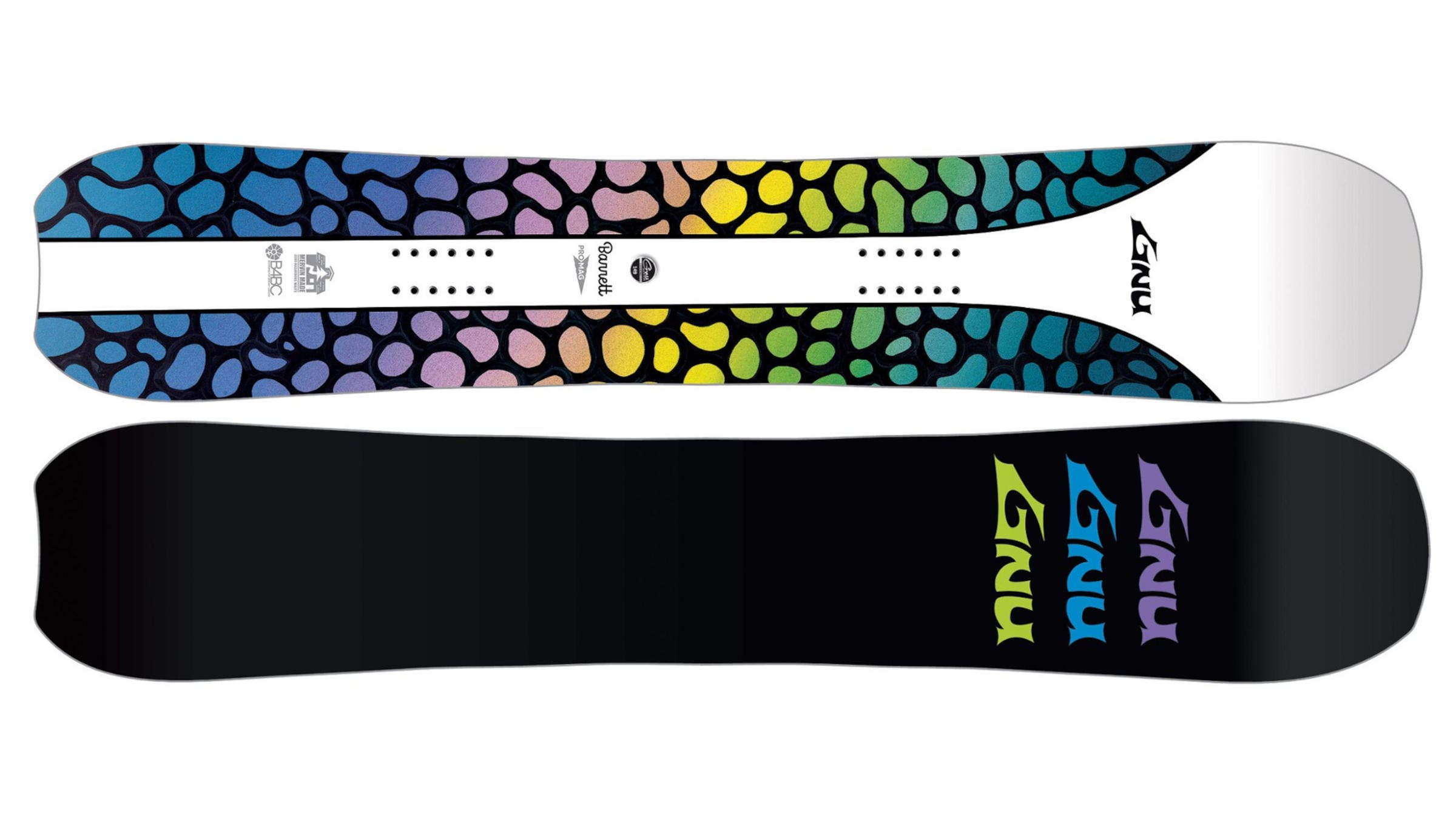
Best Snowboard for Advanced Riders
Gnu Barrett
Sizes: 146, 149, 152, 155 cm
Genre: All-mountain
Profile: C3 Camber (camber-dominant hybrid with mild rocker between the feet)
Pros and Cons
+ Balanced, reliable yet fun quiver-killer
+ Energetic pop
+ Excellent edge hold
𑂾Too much board for beginners
𑂾Better suited to jumps than jibs
Gnu first submitted the Barrett—the long-running pro model of snowboard legend Barrett Christy—to our annual snowboard test a few years ago, and it arrived like a meteor. Christy’s pro model has been a staple in the Mervin lineup since the mid-90s, but the board has evolved over the years, and the iteration that wowed our team was a mid-stiff, moon-tailed, all-mountain-assaulting, line-lacing, directional deck. In fact, we’ve awarded it Editors’ Choice honors twice in the last few years.
“Gnu nailed it with the Barrett,” applauded a Tahoe banked slalom trophy collector, Euro-carving connoisseur, and all-around ripper. “It’s equally fun in pow, groomers, chunder, and park. I couldn’t find its weak point—a true quiver killer!” She dug the progressive Magne-traction, a design update that features a smooth sidecut in the front half of the board, transitioning to Gnu’s characteristic serrated sidecut in the back half of the board. “The Magne-traction delivers a precise ride with superb edge-hold fit for a queen, and the Barrett performs well wiggling through the trees and arching long turns alike,” she reported.
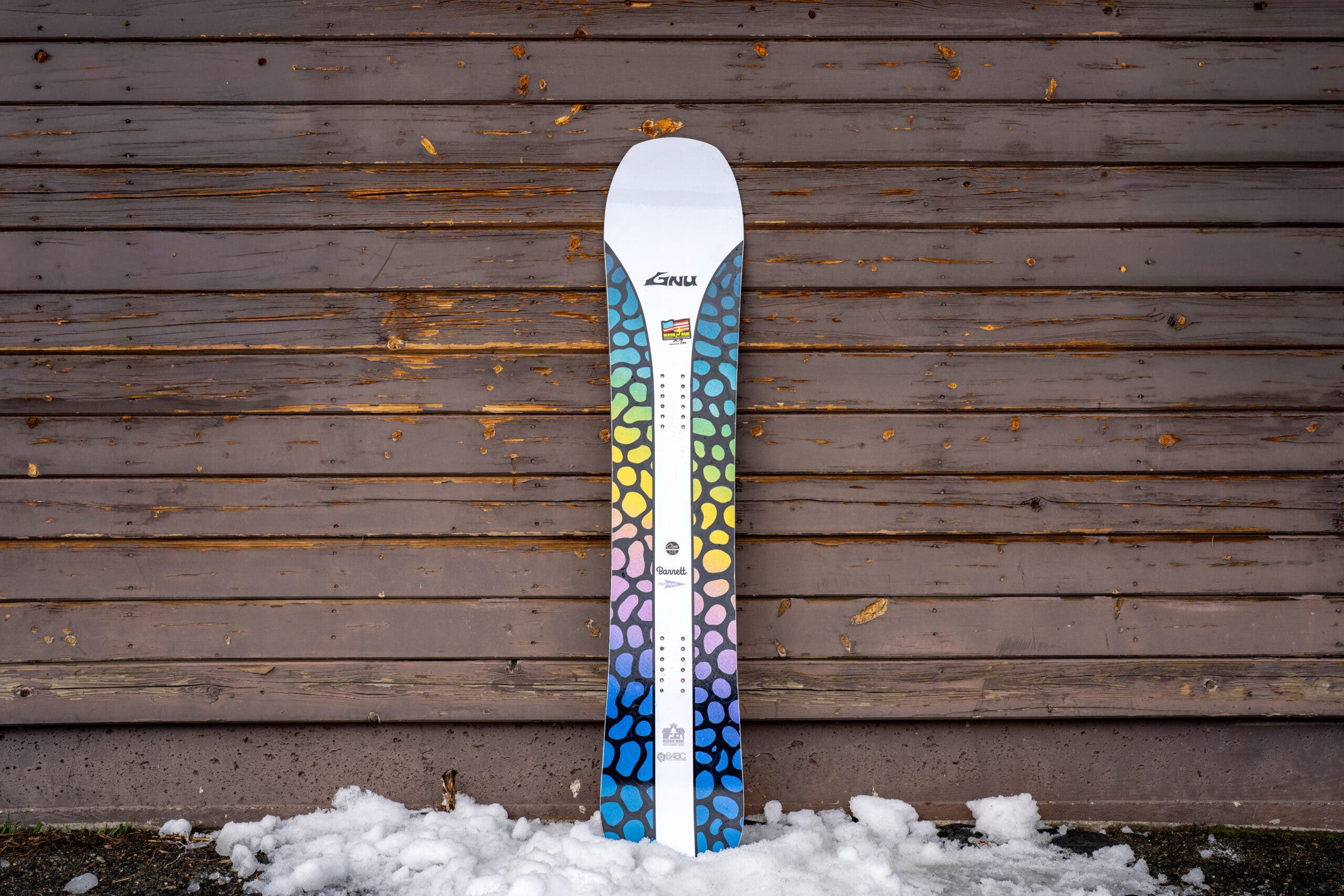
She also loved the energetic flex pattern—supplied by the Forest Stewardship Council-certified aspen and paulownia core, and reinforcing carbon bands—which she found balanced enough for all types of terrain. A Mammoth snowboard coach agreed after ripping the Barrett on fast and steep groomers, wind-loaded tree stashes, and even the park. “I had a blast everywhere. I found this board to be the perfect stiffness that manages chatter really well, but at the same time soft enough to flex and pop effortlessly,” she said. She gave kudos to the Barrett’s versatile 8.1-meter radius sidecut and poppy, hardpack-gripping C3 camber profile (a camber-dominant hybrid with mellow rocker between the feet).
The only ones who wouldn’t have fun on this whip, said another Sierra tester, are “pure park rats and beginner riders.”
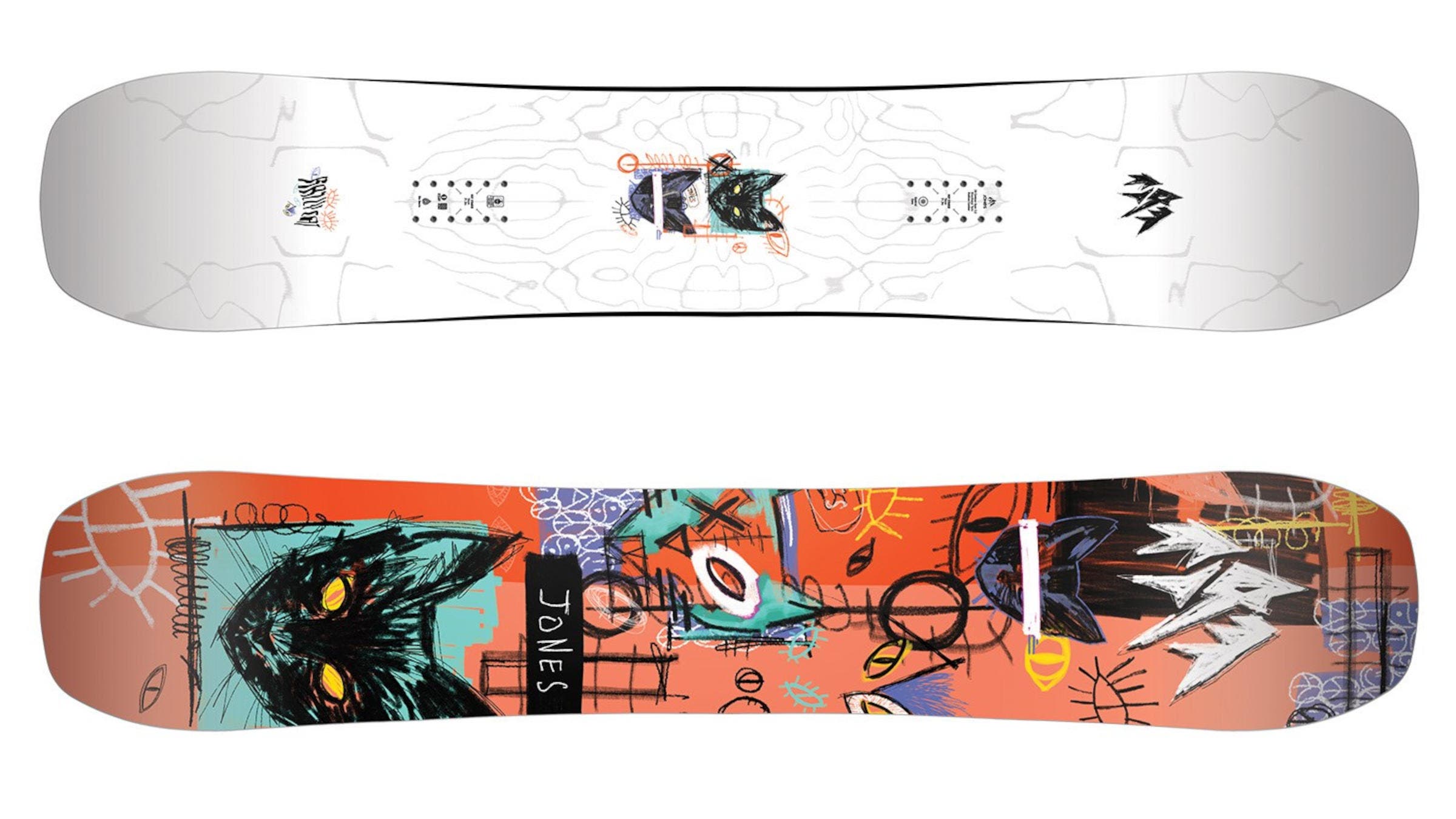
Best Snowboard for Beginners And Intermediates
Jones Women’s Rally Cat Snowboard
Sizes: 142, 145, 148, 151, 154 cm
Genre: All-mountain freestyle
Profile: True camber
Pros and Cons
+ Approachable flex
+ Fun and easy to ride
+ Decent float in powder yet still solid riding switch
+ More butter than Land O’Lakes
𑂾Overwhelmed at high speeds in variable conditions
𑂾Not the most reliable for bigger drops
One of the most approachable and fun snowboards we’ve tested, the Rally Cat is the definition of playful. “Way fun to ride—its life purpose is to bring joy,” reported a longtime Sierra board tester after scoring the Rally Cat high in the pop and butter departments.
Jones combined a capable, all-mountain directional twin shape (a touch of setback, zero taper, full camber, and spooned-out nose and tail) with a softer, forgiving flex pattern. That flex comes from a poplar wood core and a dual-direction, dual-layer, stitched fiberglass laminate. The resulting ride speaks to intermediates or even improving beginners who want to take their riding to new heights. A progressing, all-mountain, Tahoe tester judged the flex “loose enough to be playful but stiff enough to hold an edge.” She reported that the shape inspired confidence and elevated her riding to a “more fun level,” recommending the board for “new riders, park riders, and playful freeriders.”
A harder-charging Tahoe freerider and snowboard instructor opined: “The Rally Cat loves to spring into the air with minimal effort, and it has a flexy softness that lends itself to ground tricks like butter on toast. However, don’t ask it to charge through crud or stomp a big drop into a variable landing.” The same buttery flex in the tail that makes the Rally Cat a blast on side hits and park laps can be overwhelmed by overhead drops and chop.
That said, this board certainly isn’t reserved for intermediate shredders. It just depends on your priorities. Playful advanced riders who prefer wiggling, popping, jibbing, and buttering over pedal-to-the-metal mashing will have a riot on this board. One such rider, a freestyle-focused tester and Mammoth snowboard coach, reported: “The slight directional shape and added volume in the nose help this board go through deep, fresh snow effortlessly—even if the ‘fresh snow’ is really some good, ole, heavy Sierra cement.”
Even with the setback stance, the coach felt the lack of taper allowed the Rally Cat to jib through the park and also rip switch extremely well. She also dug the tight, 6.6-meter sidecut for the 148-centimeter length we tested. Combined with the spoon-shaped nose and tail, she said the Rally Cat facilitates, “Effortless turn initiation and quick and efficient edge-to-edge transitions.” In sum, she praised the Rally Cat as a quiver-killer she’d happily ride on sunny spring park days, deep mid-winter powder days, and everything in between.
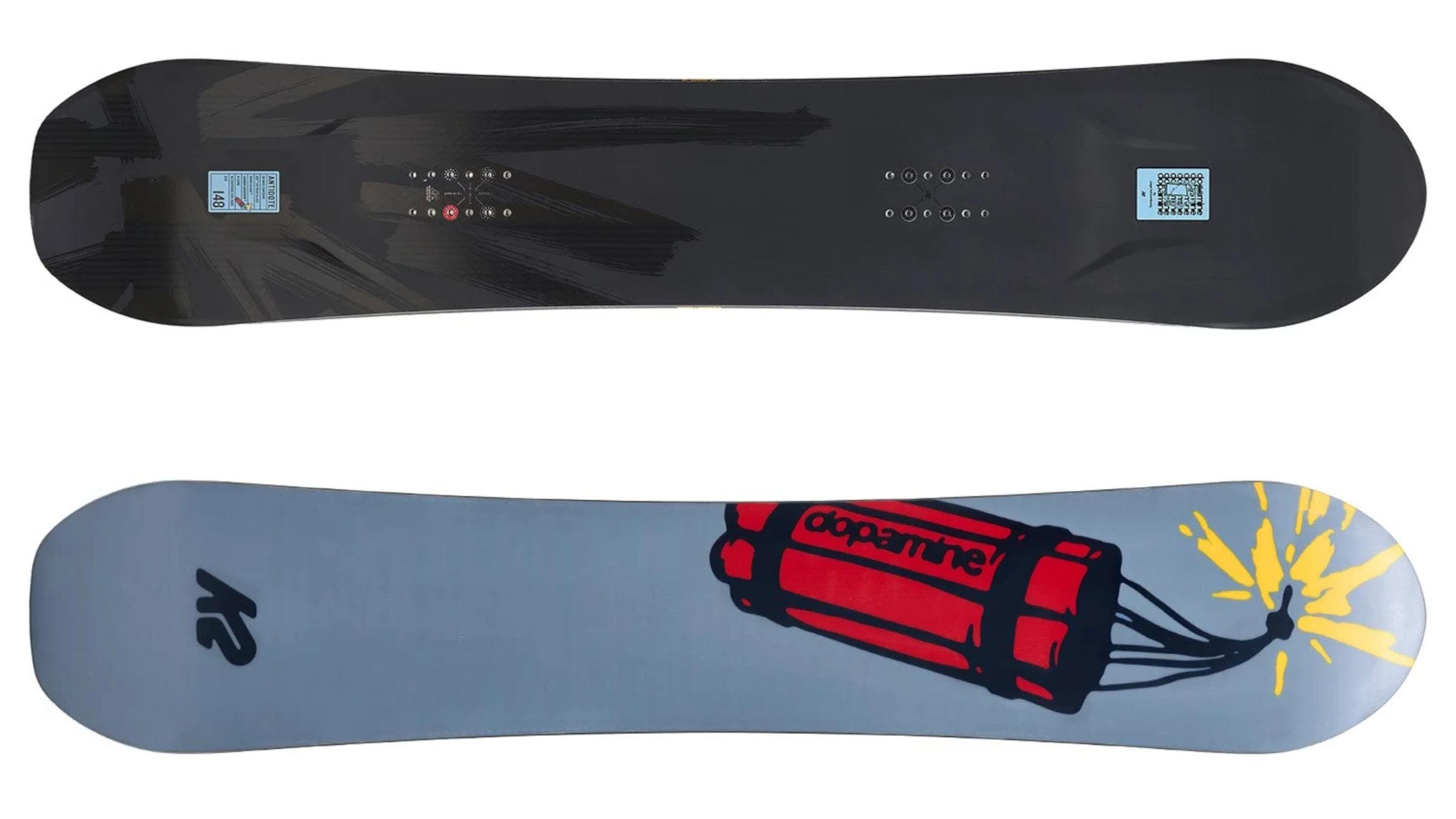
Best Backcountry-Freestyle Snowboard
K2 Antidote
Sizes: 148, 151, 154, 157, 158w, 159, 161w, 162, 163w
Genre: All-mountain, backcountry-freestyle, freeride
Profile: Camber
Pros and Cons
+ Versatile all-mountain shape
+ Stomps landings in powder, regular or switch
+ Ideal for throwing tricks in freeride terrain
+ Stiff, reliable, responsive ride
𑂾Not very forgiving
𑂾Some freeriders will prefer more directional shapes
The airtime-loving Antidote is a unisex cambered backcountry-freestyle deck that had testers racing to space like the USA and USSR astronauts in the 1960s. It features minimal setback and zero taper for stomping and riding switch in powder, and a versatile, blended sidecut that can handle higher speeds and quicker carves alike. “Turns of all sizes are a piece of cake,” commented a South Lake freeride competitor.
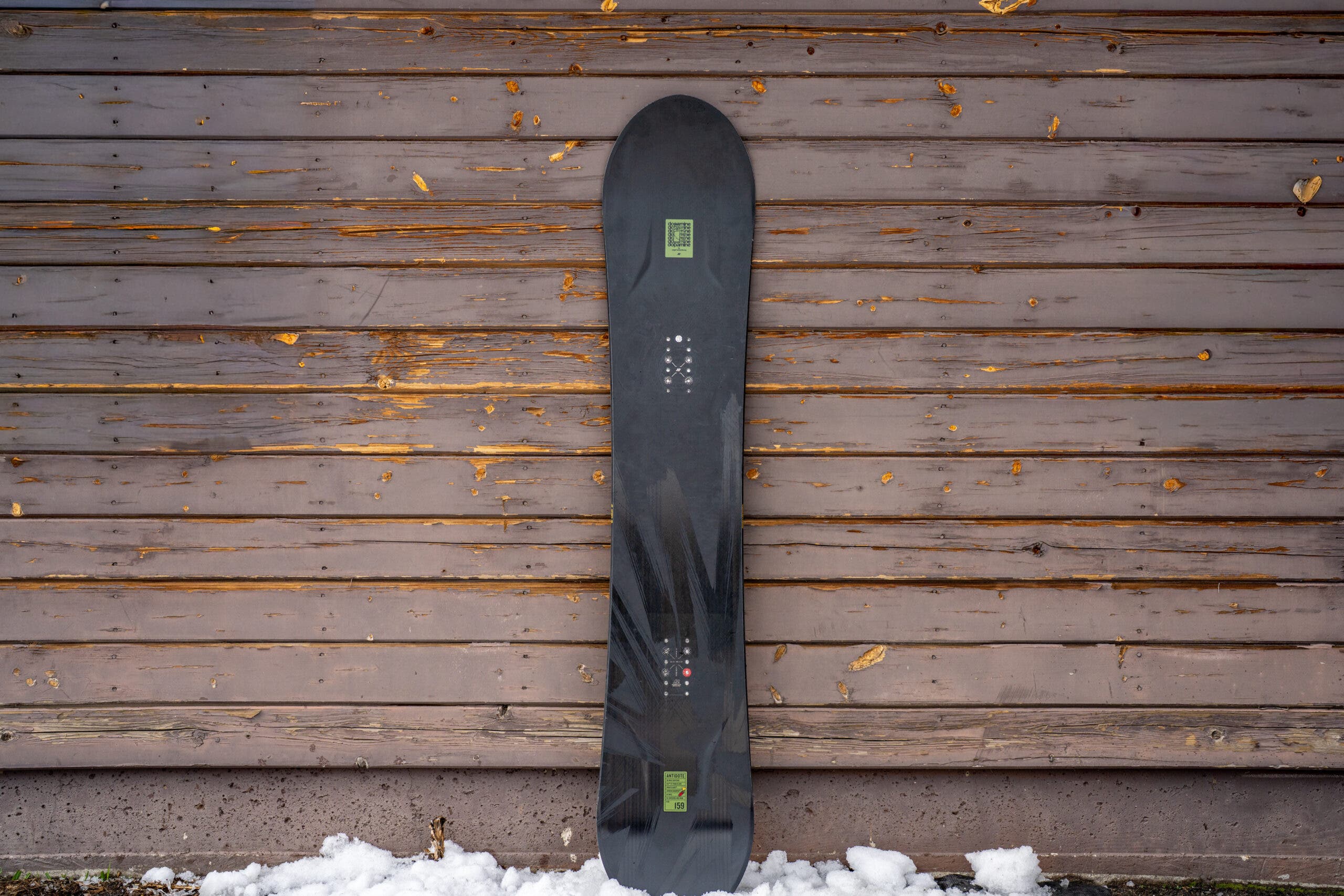
The construction is space-age. A bamboo-bolstered aspen and paulownia core is reinforced by a carbon glass job. Criss-crossing carbon stringers beneath the bindings transfer energy to your edges, while lighter aerospace-grade glass inserts in the nose and tail slash swing weight and boost dampening. Testers agreed the resulting stiff, responsive ride rips groomers, crushes variable terrain, and is comfortable in the air. An elite, light-on-her-feet Tahoe tester compared the Antidote to a “bullet train” chugging through chunder. “It wants to blast off of absolutely everything, and the stiff tail saved me a few times in sketchy landings,” she reported.
Multiple testers expressed appreciation for a freeride-ready deck that can go both ways. “It rides and lands switch well,” gushed a Kirkwood snowboard instructor after linking spins into her off-piste testing. “But it’s an absolute star when it comes to bombing the mountain.” Unsurprisingly, anti-Antidote feedback came mostly from overwhelmed jibbers and cruisier all-mountain freestylers seeking a softer ride. “Not super forgiving,” opined one such tester.
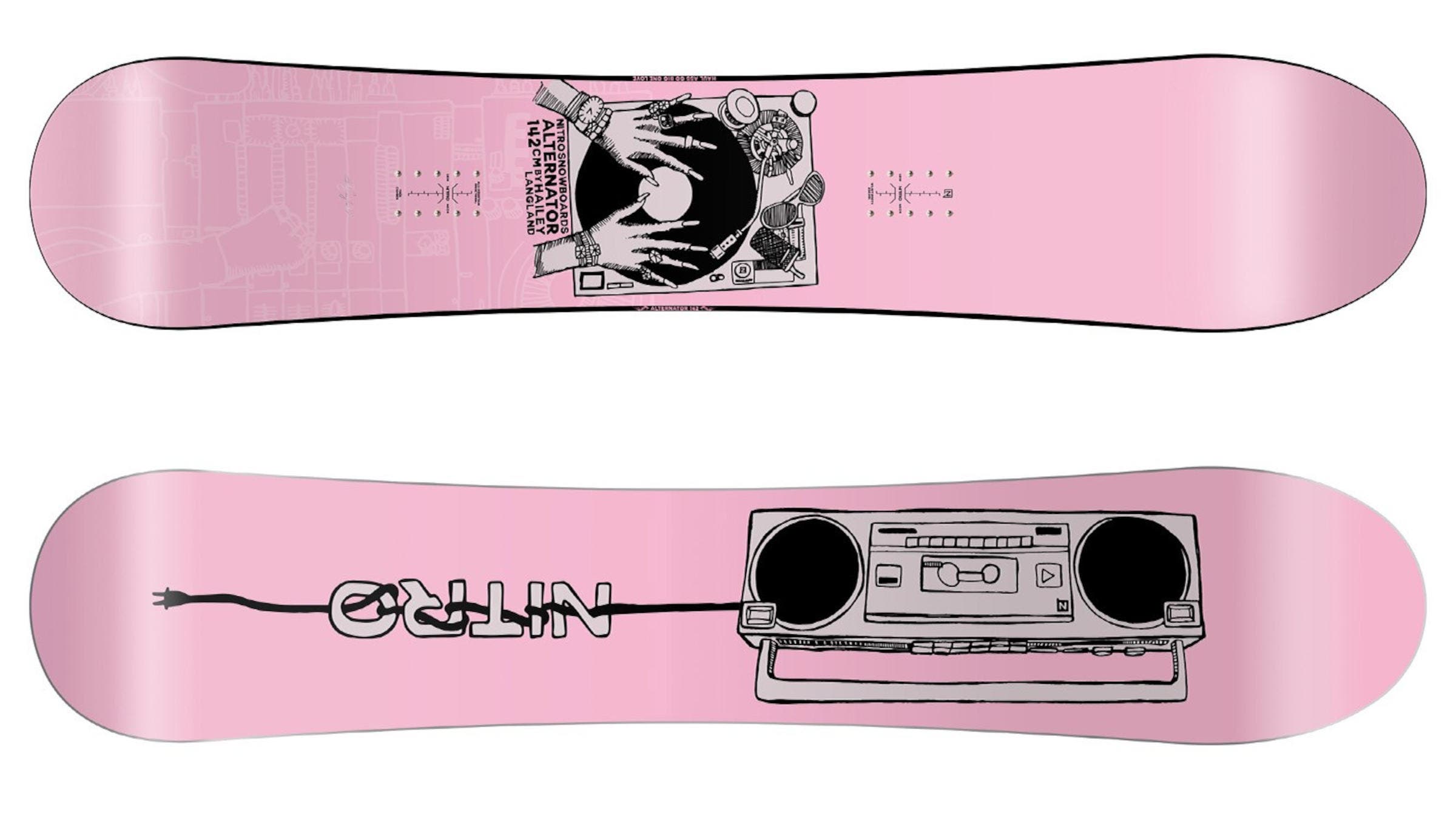
Best Snowboard for Camber Purists
Nitro Alternator X Hailey
Sizes: 142, 146, 149, 152
Genre: All-mountain/Freeride
Profile: Camber
Pros and Cons
+ Women’s size additions to the popular Alternator lineup
+ Freeride-ready, all-mountain shape
+ Solid pop and landing gear
+ Classic camber for reliability, edge-hold, and power
𑂾Too much rig for lighter or less aggressive riders
Hailey Langland’s new pro model, the women’s Alternator, features the same traditional camber profile, all-mountain directional outline, minimal taper, and adaptable sidecut as the men’s version that won Editor’s Choice honors last year.
“Freeriders will love this board,” voiced a big mountain competitor, appreciating the stability, pop, and chunder-slaying ability of a poplar core backed by nose-to-tail carbon bands. “It’s on the stiffer side, allowing for more stability at speed, but it’s still playful,” she reported. A smaller, lighter rider agreed with the first claim. “The full camber and firm flex ensure this baby charges hard.” She loved Alternator’s “full-throttle ollies, racecar-suspension on landings, and high-speed trenching carves.” However, that lighter tester didn’t find the deck that playful, and had a tough time buttering due to the stiffness in the longer nose. Still, she judged it one of the best snowboards for freeriding women who prioritize pop, power, and reliability over all else.
Dings were minimal, but another advanced rider felt sketched out on firmer groomers after slipping out on a carve. Meanwhile, an all-mountain rider reported the deck preferred straightlining at speed over slower, measured carves.
Last but not least, it’s worth noting that the only real change, aside from the scaled-down sizing, was the pink topsheet. Rather than giving Nitro shade for following the shrink-it-and-pink-it playbook, our testers dug it. “It gives strong Riot Grrrl vibes. Fun and playful but also tough,” wrote an Eastern Sierra punkophile.

How to Choose the Best Women’s Snowboard
Shopping for snowboards is like dropping a cliff: It’s equal parts exciting and nerve-wracking. But if you do your homework before you send, chances are you’ll ride out just fine. Here are a few tips to help you stick your landing:
Ride as Many Boards as Possible
Demo boards from your local shop or at resort demo days, swap with your friends, and do whatever it takes to ride as many boards as you can. Whether you’re an old head or relatively new to the game, testing a diverse range of boards will expand your snowboard lexicon. You can read reviews of the best snowboards for women all day long, but nothing informs your decision-making like time on snow. One word of advice: Complete newbies should learn to turn properly on a board they’re comfortable with before going on demo sprees.
Shop by Riding Style
Here are the three most common snowboard styles:
- Freestyle Boards: Freestyle, or park, boards are on the shorter side, which makes them easier to spin. They’re either true twins, meaning they’re symmetrical from nose to tail, facilitating landing and riding switch, or directional twins, symmetrical in shape but not in flex pattern or profile, or vice versa.
- Freeride Boards: Freeride boards are designed for speed and stability when charging groomers, riding off-piste, and ripping backcountry conditions. They’re usually directional (the nose and tail are defined) and tapered (the nose is wider than the tail). Directional shapes float and carve well, but riding switch isn’t a cakewalk. Most freeride boards are on the stiffer side, supplying stability for big mountain charging.
- All-Mountain Boards: All-mountain shapes blend the freestyle elements of park boards and the big-mountain chops of freeride decks. They can ride switch through the park one lap and bomb a hike-to chute the next. If you’re unsure of where to start or you only have a budget for one board, go with a versatile all-mountain board.
Consider Profile
Profile refers to the curvature that’s visible when you lay a board flat on the ground and look at it from the side. It is a critical element of board design, as it dictates how and where a board interacts with snow. There are two primary profiles to be familiar with: camber and rocker.
- Camber is the time-honored, traditional profile that looks like an upside-down U when laid flat. The board will touch the ground near the nose and tail, but the center will be raised off of the ground. This curvature supplies drive, stability, and edge hold, allowing riders to flex into the deck and dig into the snow. It’s also a principle ingredient in pop production—if you like to send ollies to the moon or carve aggressively on groomers, camber is your launch pad.
- Rocker is reversed camber. Lay a rockered board flat, and it’s shaped like a subtle U. You’ll find a single low point in the center of the board while the nose and tail float off the ground. Rocker provides a fun, skate-like ride. It’s easy to turn, and it enables you to weight your back foot and float through deep powder. However, it’s not as reliable in technical steeps, on icy hardpack, or on high-speed straight lines.
- Hybrid profiles mix rocker and camber. These combos usually attempt to blend the skate-like, buoyant, easy-turning aspects of rocker with the pop, stability, and edge-hold of camber.
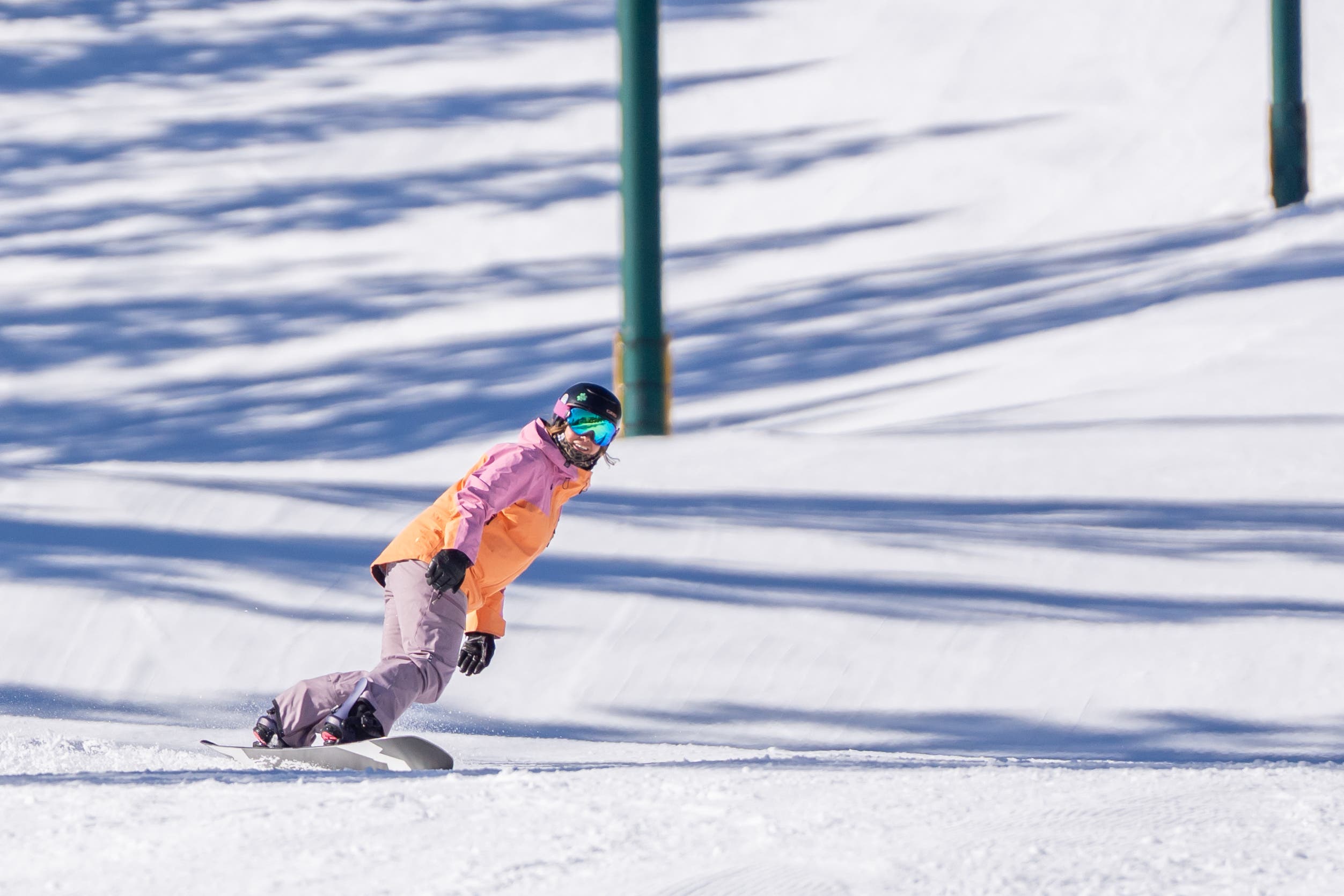
Sizing Tips
Sizing a board can be just as tricky as picking one in the first place. Sizing depends on a number of factors, both in terms of the board itself and the rider who’s rocking it. One outdated sizing method: comparing board length to rider height, which doesn’t account for weight or board width. Instead, focus on these considerations.
- Rider Weight: Weight enables a rider to flex a board and engage its camber profile.
- Skill Level: If you’re a beginner, look at softer, forgiving shapes—and if you’re between sizes, err shorter. A smaller board is going to be much easier to turn and better suited for learning. If you’re an intermediate, size in the middle of your weight range and consider slightly stiffer all-mountain shapes—these boards will allow you to progress and build upon the skills you developed on a softer, shorter shape. If you’re an advanced rider, your board sizing depends more on riding style.
- Riding Style: As we mentioned earlier, different boards are meant for different objectives. That said, most people can’t afford a full quiver. So, when in doubt, go with an all-mountain shape and size to get the most versatility for your buck. That 158 can still hit jumps and rails, and on powder days, you can set back your bindings for more float.
- Snow Conditions: Powder-specific boards are usually longer, wider, or both, providing more surface area and float in deep snow.
- Boots: If you have large boots, particularly in relation to your height and weight, you may need to consider a mid-wide or wide board. The last thing you want is toe or heel drag, which will happen on a board that’s too narrow for your boot length.
- Volume-Shifted Shapes: Some boards, referred to as volume-shifted shapes, are meant to be ridden shorter than traditional snowboards. Volume-shifted shapes condense the surface area and float of a longer shape into a more maneuverable package. Usually, a brand will supply sizing recommendations for volume-shifted shapes. Once you figure out your standard board sizing, you’ll be able to size volume-shifted shapes accordingly.
- Demo Multiple Sizes: Again, the best way to develop your understanding of snowboard sizes is to keep demoing boards. Don’t just demo different boards from different brands, either—if possible, demo the same board, from the same brand, in slightly different sizes, and test them in varied conditions.
Unisex, Women’s, and Men’s Snowboards
Women’s snowboards are generally smaller and more flexible compared to men’s snowboards. Other than those key attributes, the biggest difference between men’s snowboards and women’s snowboards often comes down to graphics, which might impact the aesthetic of your kit, but not the way a board performs on the hill. But don’t let gender dictate what boards you can and can’t ride. Many of our male and female snowboard testers ride unisex boards, which are becoming increasingly popular as brands turn away from largely unhelpful gender constraints. Instead, focus on factors like flex, board length, recommended rider weights, board width (especially regarding your boot size), and other riding features.
How We Test Women’s Snowboards
- Number of testers: 13
- Snowboards tested: 47
- Brands represented: 25
- Average board score: 72 percent (up from 68 percent last year). For reference, the average board scored a 5.08 out of 7, which, based on our rubric, translates to a “good” board that testers would be happy to add to their quiver.
- Highest board score: 93 percent (Jones Howler)
- Review forms submitted: 506+
- Cases of Fat Tire remaining at the end of the test: 0
Our home for this year’s snowboard test was dream destination Kirkwood Mountain Resort. Located just south of Lake Tahoe, Kirkwood is 45 minutes away from Stateline, Nevada, and an hour and a half from the Reno-Tahoe International Airport—just far enough away from the closest hubs that it can be much less crowded than many more easily accessed Tahoe shred destinations, and that’s just fine with us. Not only do our testers hate lift lines, but racking up maximum vert is mission-critical for testing the best women’s snowboards.
Our shredquarters for the week was steps away from Chair 10, also known as “The Wall,” a notorious lift that’s an unbeatable gateway to cliffs, steeps, and technical terrain. No joke, this lift accesses some of the best freeride terrain in the Lower 48, although the most gnarly face, The Cirque, is closed to the public (sadly, that does include our test team, though our freeride testers were salivating at the thought of getting a chance to ride this legendary terrain). The Cirque does, however, open for freeride competitions, and Kirkwood hosted Freeride World Tour qualifying events, Junior Freeride Championships, and even a Natural Selection Tour duel in the zone last season.
A snowball’s throw from The Wall is Chair 6, also known as “Cornice Express,” a high-speed chair that gives way to more freeride terrain, sidehit-laden gullies, steep groomers, flowy trails, terrain parks, and mogul fields. While we explored the entire resort, most of our time was spent lapping Chair 6. It allowed our test team to stack vert and test snowboards efficiently. Last but not least, we spent a solid chunk of time in Kirkwood’s terrain parks, which, aside from our crew, were virtually empty mid-week, despite sunny, slushy conditions (primo for park laps!). To be honest, we’ve tested snowboards at countless resorts over the years, and it’s hard to think of a better proving ground than Kirkwood.
We had 13 women on the testing roster this year, enough to handle 47 unisex and women’s snowboards submitted by brands big and boutique alike. The vast majority of our test team consisted of riders local to the Sierra, ranging from intermediate to expert—a critical mix to assess which boards are best for each specific skill level.
After hammering two or three laps on a board—occasionally more if the deck deserved it—testers returned to shredquarters to fill out comprehensive review forms. We scored boards on overall performance, responsiveness, turning ability, pop, and performance at speed. We also asked them a handful of qualitative questions, including if they’d spend their hard-earned cash on each board. Then, we grabbed a drill or screwdriver, found a new steed, swapped bindings, and hit the slopes. Rip, review, wrench, repeat.
We also ran extended testing throughout the rest of the season, seeking to put higher-scoring gear through as many conditions and scenarios as possible. Testers took top-performing splits, solids, boots, and bindings home for long-term analysis, riding until the snow melted and the lifts stopped churning at their local hills (Palisades and Mammoth were cranking through May and June, respectively).
Then, I sorted through over 506 feedback forms—the most review forms we’ve ever collected—before identifying the top picks and writing these reviews. Lastly, I compared our top picks from this year’s test with top picks from last year’s test. That enables us to include a few carryover favorites from last year in this guide to fill any gaps in our coverage, because, hey, if it ain’t broke…
Meet Our Testers
Truckee’s own Jenna Shlachter is as brilliant on the hill as she is off it—which is saying something since she’s a Doctor of Psychology, after all. When she’s not on the clock, she’s usually on her snowboard, ripping everything from park to powder. Her trophy shelf needs regular reinforcement, as every year she seems to add banked slalom awards to her already impressive collection. Lucky for us, Shlachter is also an unabashed snowboard nerd, and she’s been a key contributor to our snowboard test for the last few seasons.
Based in Tahoe, Anna Doucette is a lifelong snowboarder who’s been a member of the American Association of Snowboard Instructors for two decades. She’s spent so many years articulating difficult-to-grasp movements to aspiring riders and fellow instructors that she’s a natural and extremely articulate gear reviewer, and she’s been a key contributor to our Tahoe testing.